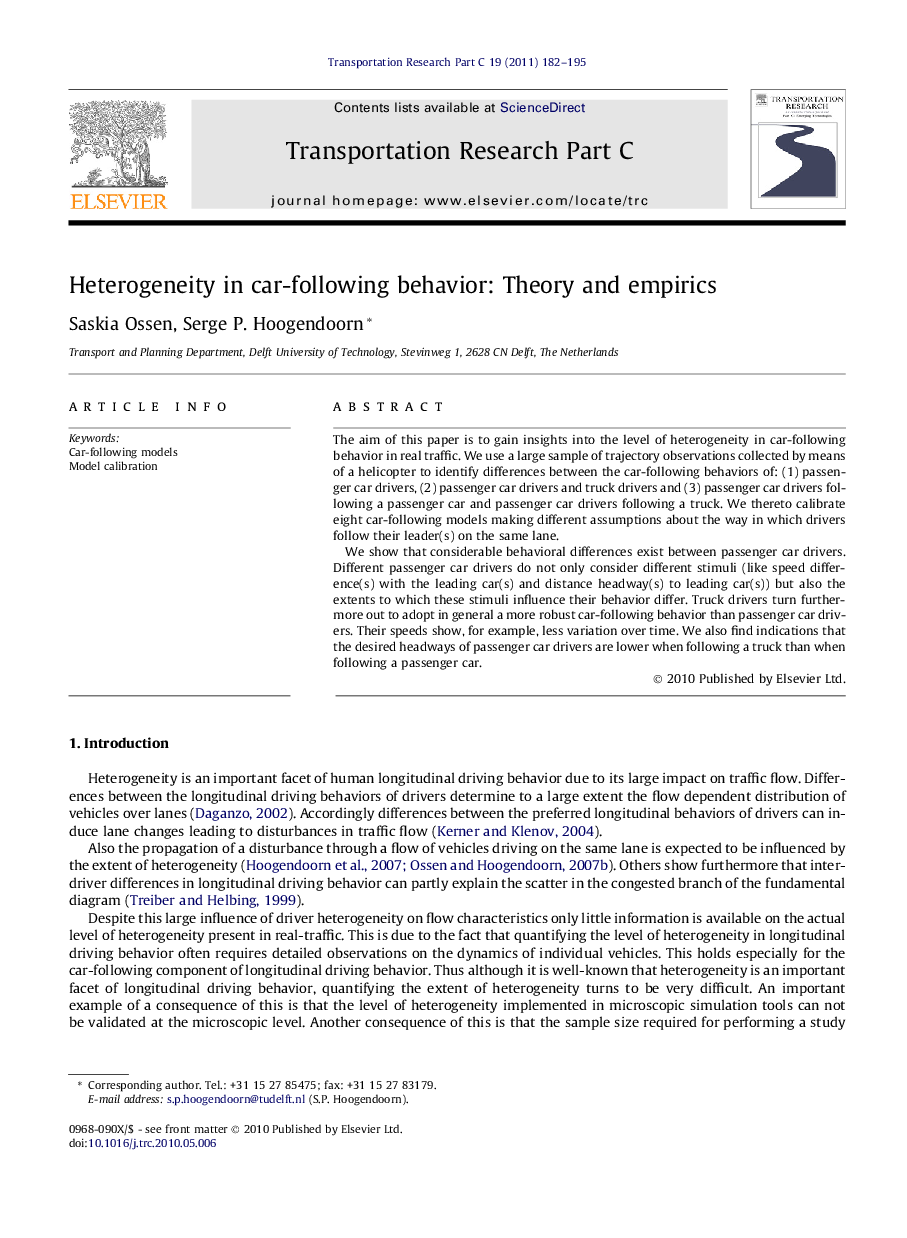| Article ID | Journal | Published Year | Pages | File Type |
|---|---|---|---|---|
| 525315 | Transportation Research Part C: Emerging Technologies | 2011 | 14 Pages |
The aim of this paper is to gain insights into the level of heterogeneity in car-following behavior in real traffic. We use a large sample of trajectory observations collected by means of a helicopter to identify differences between the car-following behaviors of: (1) passenger car drivers, (2) passenger car drivers and truck drivers and (3) passenger car drivers following a passenger car and passenger car drivers following a truck. We thereto calibrate eight car-following models making different assumptions about the way in which drivers follow their leader(s) on the same lane.We show that considerable behavioral differences exist between passenger car drivers. Different passenger car drivers do not only consider different stimuli (like speed difference(s) with the leading car(s) and distance headway(s) to leading car(s)) but also the extents to which these stimuli influence their behavior differ. Truck drivers turn furthermore out to adopt in general a more robust car-following behavior than passenger car drivers. Their speeds show, for example, less variation over time. We also find indications that the desired headways of passenger car drivers are lower when following a truck than when following a passenger car.
